Clipart tagged: ‘Medusiform’
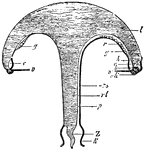
Anthomedusae
"Medusiform person, one of the Anthomedusae, detached from a hydroid colony of Syncoryne. Ocelli are…
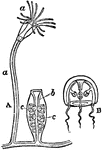
Campanularia
"Diagram of a colony of Campanularia, showing four forms of persons. A, portion of a fixed colony; a,…
Clava
"Diagram of Clava, showing a hydriform person surrounded by a verticil of degenerate medusiform persons…

Corymorpha
"A, a hydriform person giving rise to medusiform persons by budding from the margin of the disc; B,…
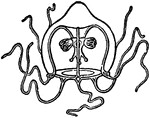
Lizzia
"Medusiform person (Lizzia), one of the Anthomedusae, detached from a hydroid colony of the family Endendridae.…

Sarsia
"Medusiform person (Sarsia), one of the Anthomedusae, detached from a hydroid colony of the family Corynidae.…

Siphonophora
"Diagram showing possible modifications of medusiform and hydriform persons of a colony of Siphonophora.…

Sporosae
"Gradual degeneration of the medusa bud into the form of a sporosae. The black represents the enteric…
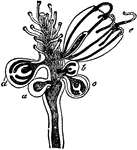
Syncoryne
"Hydriform person of Syncoryne, with medusiform persons budding from it, and shown in various stages…
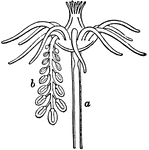
Tubularia Indivisa
"A single hydriform person a bearing a stalk carrying numerous degenerate medusiform persons or sporosacs…